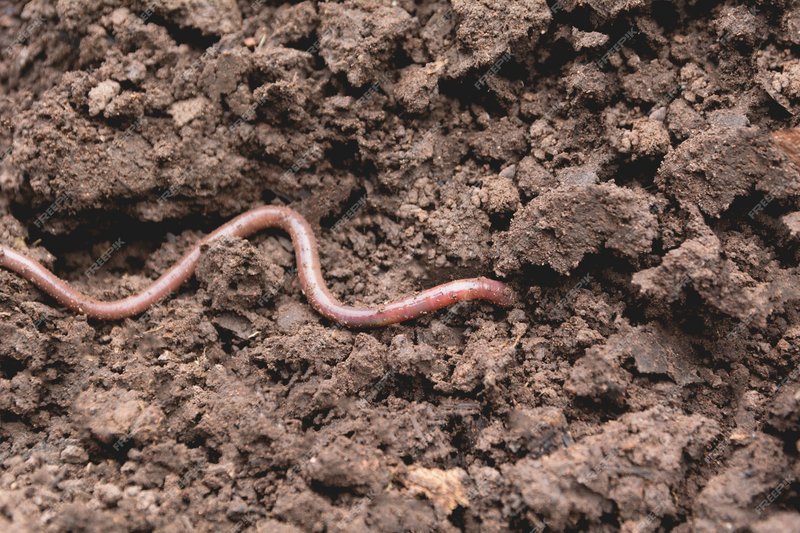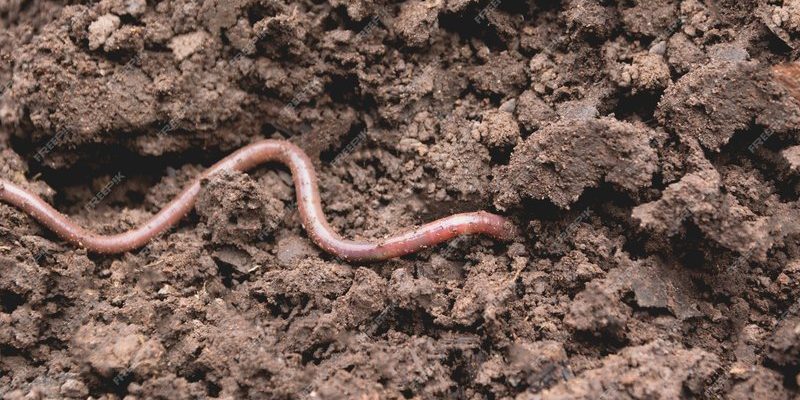
Let’s take a closer look at what these conditions are and why they matter. We’ll explore everything from soil texture to moisture levels, and even how pH plays a role. By the end of this, you’ll have a solid foundation to support not only earthworms but also a vibrant ecosystem in your garden.
Understanding Soil Types and Texture
Soil is more than just dirt. It’s a complex mixture of minerals, organic matter, air, and water. The soil texture—how fine or coarse the particles are—plays a huge role in creating the perfect habitat for earthworms. There are three main types of soil: sandy, clay, and loamy.
- Sandy soil has large particles and drains quickly. While it’s easy for worms to move through, it often lacks the nutrients that worms thrive on. Picture trying to walk on a sandy beach; it’s easy but not very productive.
- Clay soil has tiny, tightly packed particles and retains water well. However, its compact nature can make it difficult for earthworms to move. Think of how hard it is to dig into a solid lump of clay—it’s tough work!
- Loamy soil is the golden middle path. It balances sand, silt, and clay, providing both good drainage and nutrient richness. This is where earthworms feel most at home.
To encourage earthworm populations, aim for a loamy soil mix. If your soil is too sandy or clay-heavy, you can improve it by adding organic materials, like compost or well-rotted manure. This not only enhances the soil structure but also adds valuable nutrients for the earthworms.
Moisture Levels and Earthworms
You might be wondering why moisture is vital for earthworms. Here’s the thing: earthworms breathe through their skin, which needs to be moist to absorb oxygen. If the soil is too dry, worms can suffocate and even die. On the flip side, overly saturated soil can drown them.
So, what’s the ideal moisture level? Generally, soil should be as moist as a wrung-out sponge—neither soaking wet nor bone dry. To maintain this balance, consider the following tips:
- Water your garden regularly, especially during hot, dry spells. Aim for deep watering to encourage deep root systems.
- Use mulch to help retain soil moisture. Organic materials like straw or shredded leaves break down over time, improving soil quality.
- Test soil moisture periodically. Stick your finger into the soil up to two inches. If it feels dry, it’s time to water!
Maintaining the right moisture level creates a comfortable environment for earthworms to thrive and do their fantastic work in your garden.
Soil pH and Earthworm Health
Soil pH is another critical factor that influences earthworm populations. pH is a measure of how acidic or alkaline your soil is, and it can affect worms in several ways. Most earthworms prefer a neutral pH, around 6.0 to 7.0. If your soil is too acidic (lower than 6.0) or too alkaline (higher than 7.0), it can harm earthworm health.
You might be wondering how to check your soil’s pH. It’s simple! Here are a few methods:
- You can purchase a soil pH test kit from your local gardening store. It often comes with easy-to-follow instructions.
- Some gardening centers offer soil testing services, which can provide more detailed insights.
- Another DIY method is to mix a small amount of soil with vinegar (for alkaline) or water mixed with baking soda (for acidic) to see how it reacts.
If your soil pH is off, you can adjust it. Adding lime can raise pH, while sulfur can lower it. Little by little, you’ll create a welcoming environment for earthworms.
Organic Matter: The Earthworm’s Best Friend
Earthworms love organic matter. This includes decomposing leaves, compost, and other plant materials. Not only do they feed on this organic matter, but it also helps improve soil structure and nutrient content. Think of organic matter as a buffet for earthworms!
To boost organic content in your soil:
- Incorporate compost into your garden each season. It enriches the soil and provides a nutrient source for earthworms.
- Leave fallen leaves on the ground or shred them into your garden beds. They will decompose and enrich the soil naturally.
- Grow cover crops in the off-season. They add nutrients and organic matter when tilled back into the soil.
By focusing on adding organic matter, you’re not only feeding earthworms, but you’re also improving soil health for your plants.
Reducing Chemical Use in Your Garden
This one’s a biggie. Chemicals used for weed and pest control can create a hostile environment for earthworms. These products can be toxic, impacting earthworm populations and overall soil health.
Here are some ways to reduce chemical use in your garden:
- Consider organic pest control methods, like introducing beneficial insects. They can keep pests at bay without harming your soil’s residents.
- Utilize companion planting. Certain plants can naturally repel pests and reduce the need for chemicals.
- Embrace a more natural approach to weeds. Hand-pulling or using vinegar can be effective without resorting to harsh chemicals.
By reducing chemicals, you create a safer habitat for earthworms and contribute to a more sustainable gardening practice.
Benefits of Healthy Earthworm Populations
Now that we’ve covered how to create the best soil conditions for earthworms, let’s talk about why it matters. Healthy earthworm populations lead to numerous benefits, not just for the worms themselves, but for your entire garden ecosystem.
- Soil Aeration: Earthworms burrow through the soil, creating channels that allow air and water to penetrate deeper. This helps plants grow healthier roots.
- Nutrient Recycling: They break down organic matter, turning it into nutrient-rich castings (worm poop). This natural fertilizer feeds your plants!
- Improved Drainage: Burrowing helps with drainage, reducing waterlogging and making sure your plants don’t drown.
When you support earthworm populations, you’re not only enhancing soil health but also fostering a thriving garden environment.
In conclusion, nurturing a healthy earthworm population isn’t just beneficial for the worms; it’s a cornerstone of a thriving garden. By carefully monitoring soil type, moisture levels, pH, and organic matter, you can provide the ideal conditions for these little champions of the soil. Reducing chemical use further boosts their chances of thriving. So, get that shovel out, start enriching your earth, and watch your garden blossom thanks to your new wriggly friends!

